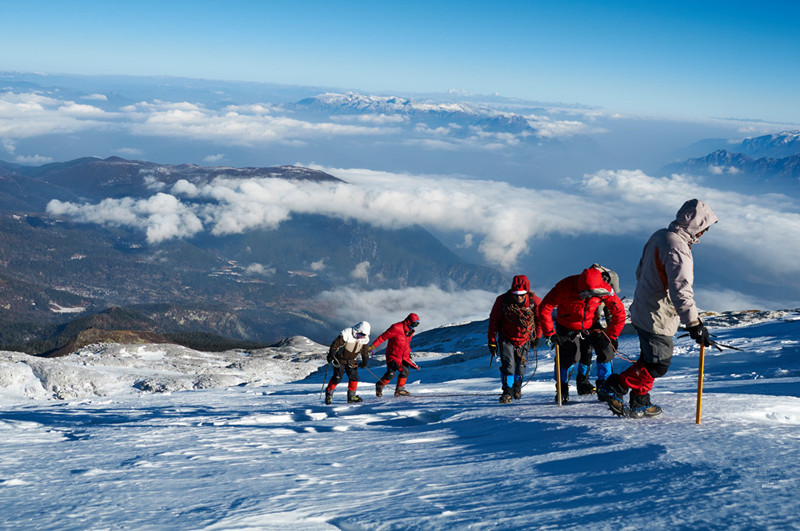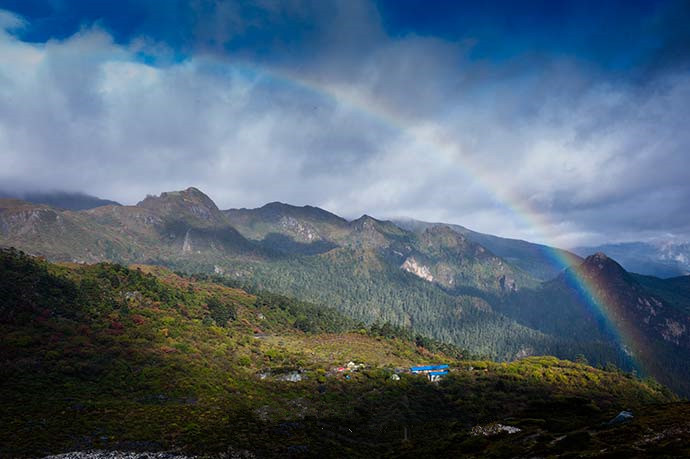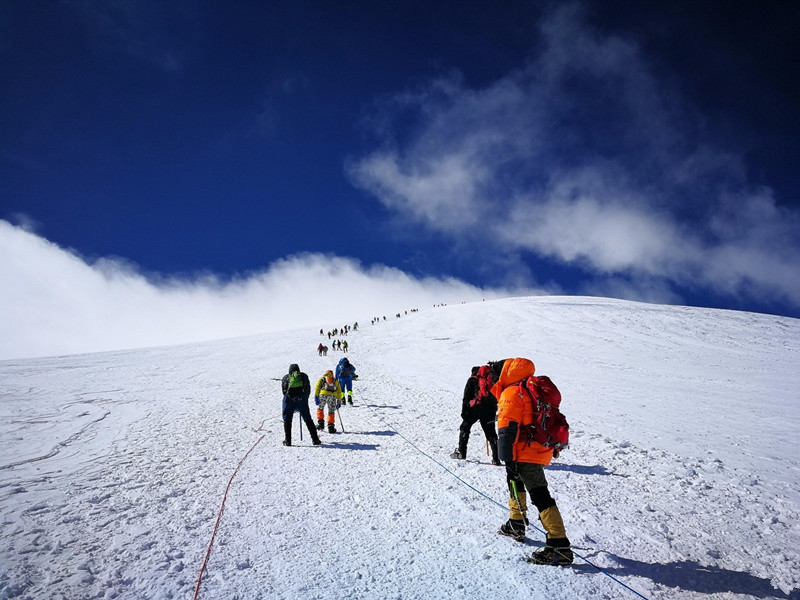
Haba Snow Mountain Climbing in December
December is a magical time to visit Haba Snow Mountain (哈巴雪山), a hidden gem in northwestern Yunnan known for its dramatic peaks, alpine meadows, and glacier landscapes. Whether you’re here to challenge the summit, trek the surrounding trails, or simply breathe in the crisp winter air, Haba in December offers a breathtaking and serene experience.
Weather & Climate
| Temperature | Condition | Altitude Impact |
|---|---|---|
| -10°C to 5°C | ❄️ Cold, dry air | Drastic drop in temps at high altitudes; snow-covered slopes |
December brings snow and icy winds to the higher elevations of Haba. The skies are often clear, but temperatures plunge sharply, especially at night and above 3,000 meters. Weather changes rapidly — one moment it’s sunny, the next you may face flurries or fog.
What to Wear 👕🧤🧣
Layering is key: thermal underwear, fleece jackets, down coats
Windproof & waterproof outerwear: essential for high-altitude hikes
Warm hat, gloves, scarf, and hiking boots: protect against biting cold
Sunglasses & sunscreen: UV is strong, especially on snowfields
🚫 Avoid wearing cotton-only layers — once wet with sweat, they cool you dangerously fast.
Festivals & Traditions 🎉
While Haba itself is a quiet Tibetan village without major public festivals in December, you may encounter local Tibetan or Naxi customs if staying in nearby Shangri-La or Baishuitai area. It’s a good time to witness traditional winter routines like butter tea brewing, highland barley roasting, or firewood prayers. You may also spot New Year’s preparations if your trip extends into January.
Things to Do in December 🏞️
🧗 Summit Trek or Base Camp Hike
For seasoned climbers, this is a snowy, technical ascent — guided expeditions with crampons, ice axes, and permits are necessary. For regular hikers, trekking to the base camp (approx. 4,100m) is a great way to enjoy the scenery without summiting.
🏔 Glacier Views & Photography
Snow-draped forests, glaciers, and cloud-wrapped ridges make Haba a photographer’s dream. The morning light is especially stunning after fresh snow.
🚶♂️ Village Walks & Cultural Encounters
Explore Haba Village’s stone houses, yaks in the valley, and prayer flags fluttering in the wind. Local families may invite you for warm butter tea — don’t miss the chance.
🧖♀️ Hot Spring Detour
Warm up in nearby Baishuitai hot springs after your hike — a perfect treat for sore muscles!

Food to Warm the Soul 🍲
After a long day in the mountains, nothing beats local highland food:
Yak meat hot pot 🐂: rich in protein and heat, perfect for cold nights
Tibetan-style noodles 🍜: with dried beef or mushroom
Butter tea 🧈☕: high-calorie, salty and warming — an acquired taste, but authentic
Tsampa (roasted barley flour) 🌾: staple Tibetan snack
Pro tip: Always eat warm and hydrate with hot drinks to fight altitude fatigue.
Travel Tips 🧭
How to Get There:
Most visitors reach Haba via Lijiang → Baishuitai → Haba by car or minivan. Winter road conditions may delay travel — plan buffer time.
Permits & Guides:
If you intend to hike above 4,000 meters, especially toward the glacier or summit, a registered guide and climbing permit is mandatory.
Health & Safety:
December is high-risk for altitude sickness. Ascend slowly, rest often, and carry oxygen if needed.
✨ Final Tip: Haba Snow Mountain in December is not crowded — you may have the entire trail or lodge to yourself. It’s a true off-the-beaten-path escape for adventurers who love snow, silence, and the majesty of high mountains.

 7 Days GolfingTour
7 Days GolfingTour
 8 Days Group Tour
8 Days Group Tour
 8 Days Yunnan Tour
8 Days Yunnan Tour
 7 Days Shangri La Hiking
7 Days Shangri La Hiking
 11 Days Yunnan Tour
11 Days Yunnan Tour
 6 Days Yuanyang Terraces
6 Days Yuanyang Terraces
 11 Days Yunnan Tour
11 Days Yunnan Tour
 8 Days South Yunnan
8 Days South Yunnan
 7 Days Tea Tour
7 Days Tea Tour
 8 Days Muslim Tour
8 Days Muslim Tour
 12 Days Self-Driving
12 Days Self-Driving
 4 Days Haba Climbing
4 Days Haba Climbing
 Tiger Leaping Gorge
Tiger Leaping Gorge
 Stone Forest
Stone Forest
 Yunnan-Tibet
Yunnan-Tibet
 Hani Rice Terraces
Hani Rice Terraces
 Kunming
Kunming
 Lijiang
Lijiang
 Shangri-la
Shangri-la
 Dali
Dali
 XishuangBanna
XishuangBanna
 Honghe
Honghe
 Kunming
Kunming
 Lijiang
Lijiang
 Shangri-la
Shangri-la
 Yuanyang Rice Terraces
Yuanyang Rice Terraces
 Nujiang
Nujiang
 XishuangBanna
XishuangBanna
 Spring City Golf
Spring City Golf
 Snow Mountain Golf
Snow Mountain Golf
 Stone Mountain Golf
Stone Mountain Golf


















